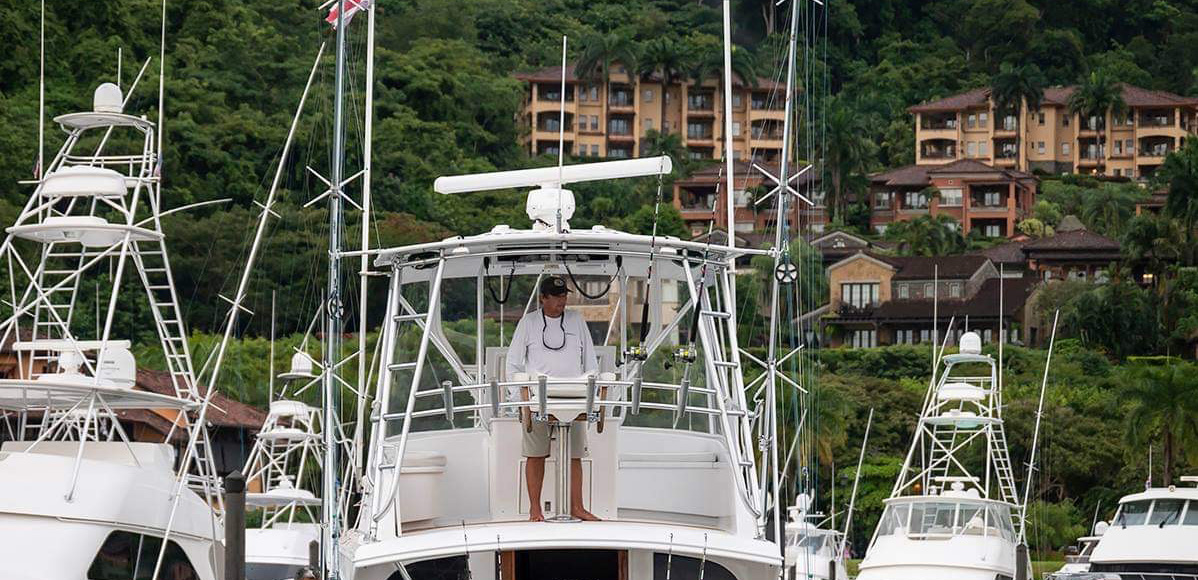Table of Contents
Masterful Insight: Captain Barkley Garnsey’s Expertise
Some professional sportfishing captains have the kind of eyes that can look down from the bridge and tell the weight of a fish coming up on the teasers behind the boat down to the pound. This is one of legendary, record-setting Capt. Barkley “Bark” Garnsey’s many skills.
A Record-Breaking Day in Madeira
Still, on June 28, 1996, off the coast of Madeira, Bark equally trusted his two mates, Charles Perry and Spencer Stratton, to make weight calls. On that day, owing to getting banged up in a death-defying overboard experience the day before trying to catch a grander blue marlin on 30-pound test, Bark’s owner, IGFA Hall of Fame angler, Stewart Campbell, let his wife, Nickie, take the fighting chair of their 44-foot Garlington, Chunda. The goal? To break the longstanding women’s record in the mid-500 pounds for blue marlin on 30-test. The story of the day is epic. Bark made the “too small, let it go” call on the first fish. The second fish was a little bigger.
“I always had a rule with my guys. I’m up in the tower, and they’re down in the cockpit. I said, ‘If I tell you I think a fish is too small and you both disagree with me, gaff it. I’ll take the blame if it’s not big enough’,” says Bark. “So on that second fish, I saw they were hesitating when I said I didn’t think it would make the record. Long story short, they released it, and we went back to fishing. I started thinking, sitting up there, and thought, man that fish was close. A little while later, Charles comes up and says, ‘Cap, we should have stuck him.’ I told him it was a little late now.”
Meanwhile, the fish Nickie reeled in were getting progressively bigger and her already formidable skills, coached this day by her husband, were getting even better. When she hooked up the fourth fish, after breaking one off, Bark got on the microphone: “That’s it. That’s the one.” Weighing in at 708 pounds, it earned Nickie the women’s 30-pound line class blue marlin world record. Out of all the world records Bark has set in his career, he says this one is his most memorable.
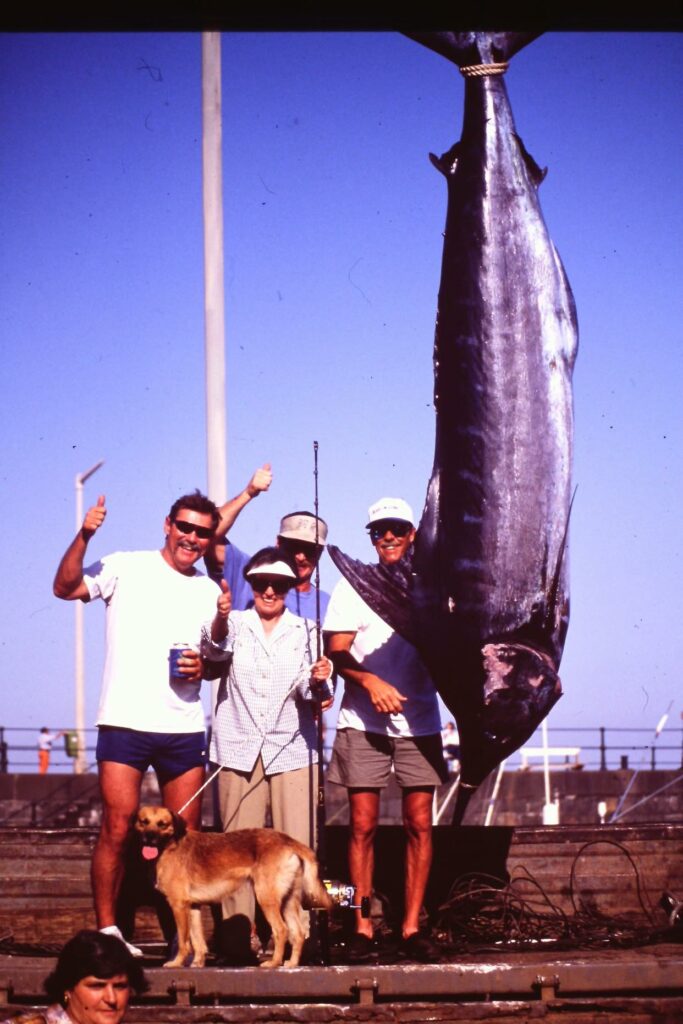
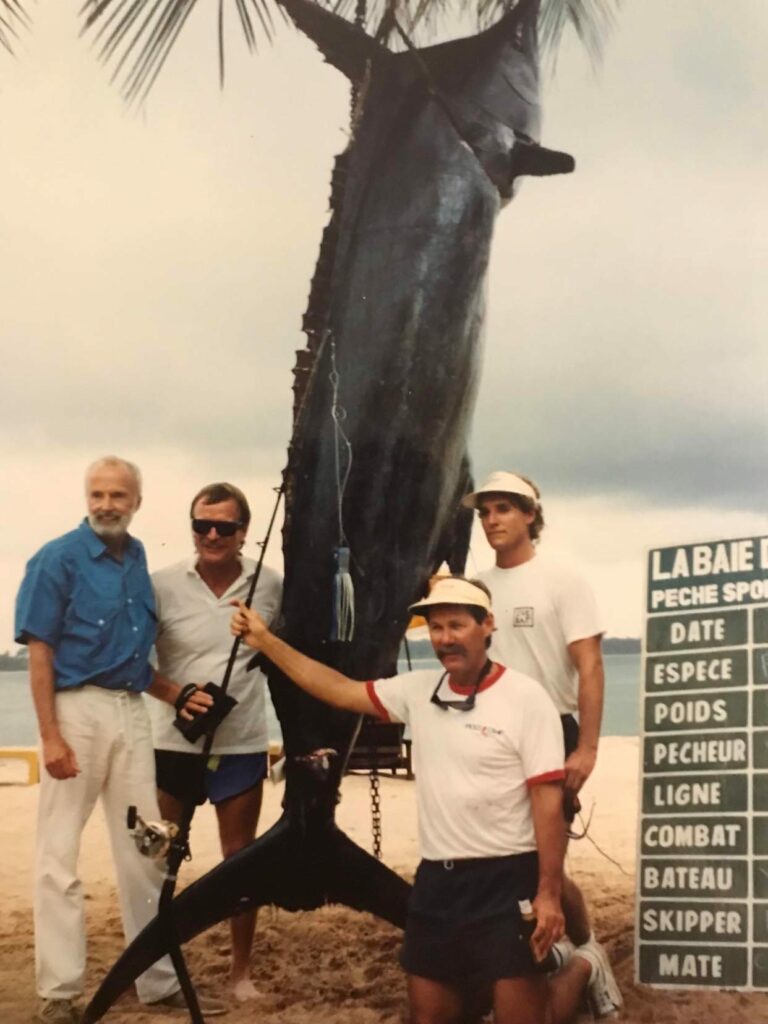
Heritage of a Fishing Legend
Pre-law was Bark’s major for two years at Palm Beach Junior College. But in reality, the die was cast on his career before he was born. To swap fisherman for sailor in the famous Jimmy Buffet song, Bark is the son of a son of a fisherman. His family hails from upstate New York, where his grandfather taught his father, Dan, how to be a fishing guide in the Thousand Islands. In the 30s, Dan started visiting South Florida and commercial fishing in the winter out of Fort Lauderdale. A decade later, he bought his own boat, the 46-foot Helen S. Six boats, up to an 87-footer, and after a 35-year career out of Pompano Beach’s Hillsboro Inlet, Capt. Dan Garnsey has been widely hailed as the father of modern-day drift fishing. Interestingly, when Bark’s mother, Janet Garnsey Hall, split from his dad, she co-founded her own drift boat business, Sea Mist, in Boynton Beach. In 1940, she was the first woman to earn a U.S. Coast Guard Ocean Operator’s license. So more correctly, Bark is the son of a fisherman and the son of a fisherwoman.
“I started fishing with my dad in the summers when I was about five years old. I think they put me out there to keep me out of mischief. When I was 11, the day I got my Social Security card, I started fishing for pay. You got to see so many different facets of fishing on drift boats, and you started to understand. It was a different viewpoint than the guys that started on sportfishing charter boats. For those of us that grew up in that trade, like Chip Shafer, Skip Smith and OB O’Brien, we take a lot of pride in it. Sure, we like to joke about it when we all get together at IGFA events. But looking back, it was a very positive thing,” says Bark.
From the Army to the Ocean: A Captain’s Journey
Bark got his Captain’s license the week he turned 18. He fished while attending junior college while playing more than studying. Then, he did an about-face and enlisted in the Army. It was 1966, and the war in Vietnam raged. Bark got another license, that of a helicopter pilot, and flew missions in Southeast Asia for three years until he was wounded and medically discharged.
“The military was a good experience for me. Instead of fooling around in college, I was as an aircraft commander and leading a team at the ripe old age of 21. You got a lot of responsibility, and that taught you something. After an experience like that, you start seeing life a little bit differently,” he says.
Back in Florida, Bark got his 100-ton license and worked briefly on drift fishing boats. Then, on charter and private sportfishing boats. Unknown to him until much later, it was an early mentor, Alan Merritt, of Merritt’s Boat & Engine Words, which lined him up with a private job. This was running the 43-foot Merritt, Xiphias, over to Cat Cay in the Bahamas and fishing for bluefin tuna. It was an exciting time, and Bark was in his element, whether it was getting big bluefin to bite on a recreational day out or in a tournament. His best catch was five in one day, twice.
“There were some experienced guys out there like Captains Gary Stueve, Fred ‘Punch’ Stone and Pat Stone, Bill and George Staros, Alan Merritt, Capt. Joe Mott, Jackie Morrow, and Danny Beare. They didn’t sit down and tell you a whole lot of things. You had better pay attention. You just watched what they were doing. If you approached them correctly, they’d share information. Back then, you treated those older captains with great respect, at least I did. Maybe it was the military in me, but I learned a lot. I enjoyed the tuna fishing. It was very competitive. There was a lot of pressure. But it was fun,” Bark says.
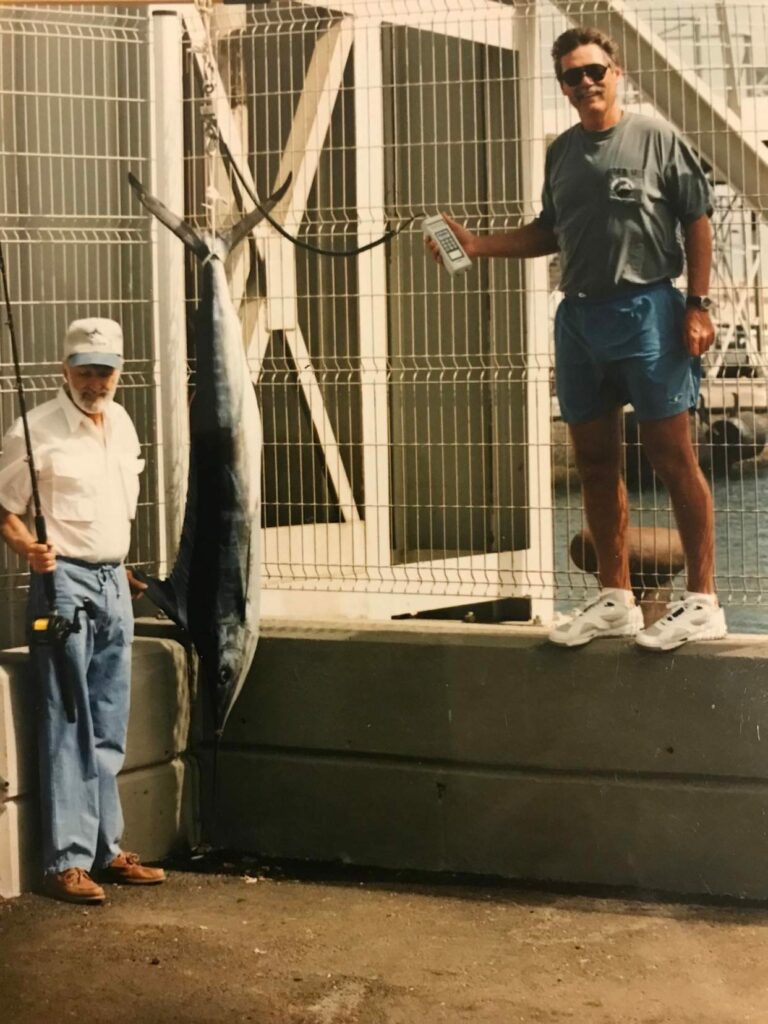
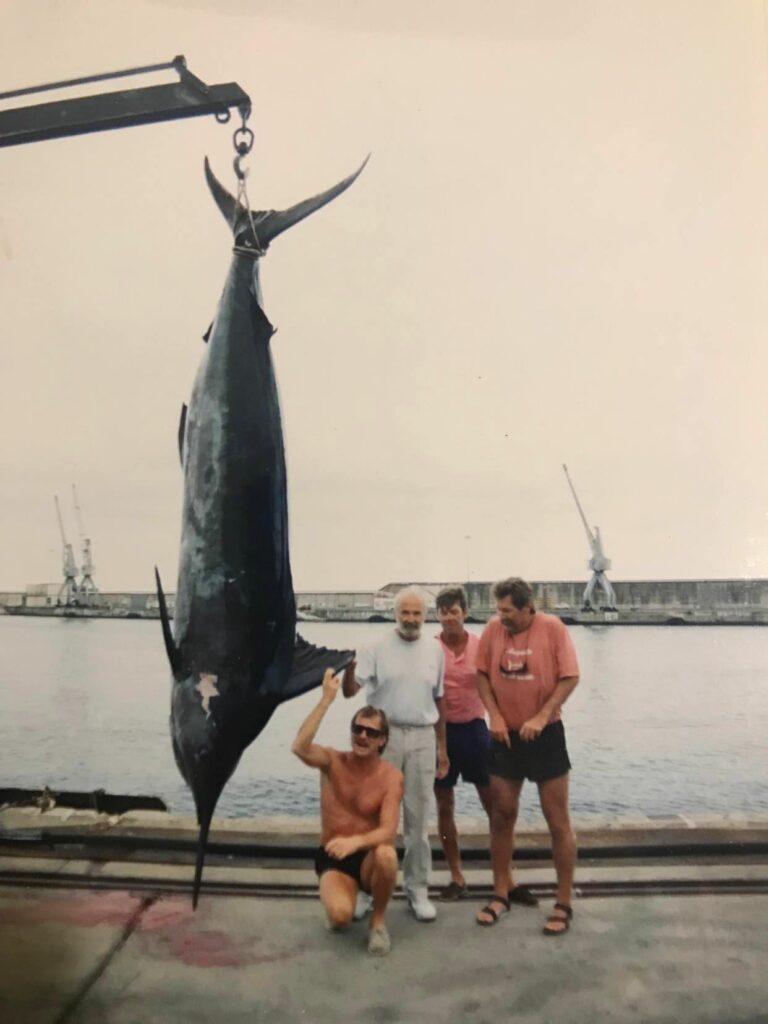
Setting & Breaking Records With Stewart Campbell
The mid-1970s fishing in St. Thomas turned out to be a life-changer for Bark in two ways. First, there was the unforgettable story of the “one that got away.” It was August 6, 1977, when Bark decided to stay ashore to pick up his wife, who was flying into St. Thomas from Florida. Instead, he let his mates take the Xiphias out for the day. Larry Martin, a paint contractor at Merritt’s and Bark’s brother-in-law, was one of those mates. Instead of the relaxing day of fun fishing Martin expected, he instead hooked up a 1,282-pound blue marlin that held the all-tackle record until it was broken in Brazil in 1992.
“There weren’t cell phones back then, so we didn’t hear about it until we got back to Capt. Jerry Black’s Lagoon Marina. Funny thing, that morning, I joked with the guys and told them they couldn’t come back in until they caught two. Well, they only caught one. But that’s okay, it was a big one. The only thing I had to do with that catch was to take the picture of them at the dock,” he says.
Secondly, a year earlier, Bark met Stewart Campbell, who was friends with Xiphias’ owners, the O’Connor family from and namesake of Port O’Connor, Texas. This meetup led to dozens of billfish that didn’t get away, as Bark and Stewart set, broke, and re-set 15 billfish world records over the next nearly three decades.
“Stewart was in the petroleum industry when I met him in St. Thomas. He had bought a house in Port O’Conner and was friends with the O’Connors. The first time I met him was at Jerry Black’s Lagoon Marina. He came over and introduced himself, and we chatted a bit. He was a very nice man, and I enjoyed talking with him. The next summer, I asked the O’Connors if we had any time open and if we could invite Mr. Campbell to go out with us on the Xiphias. He came and fished with us for five or six days. We became good friends,” says Bark.
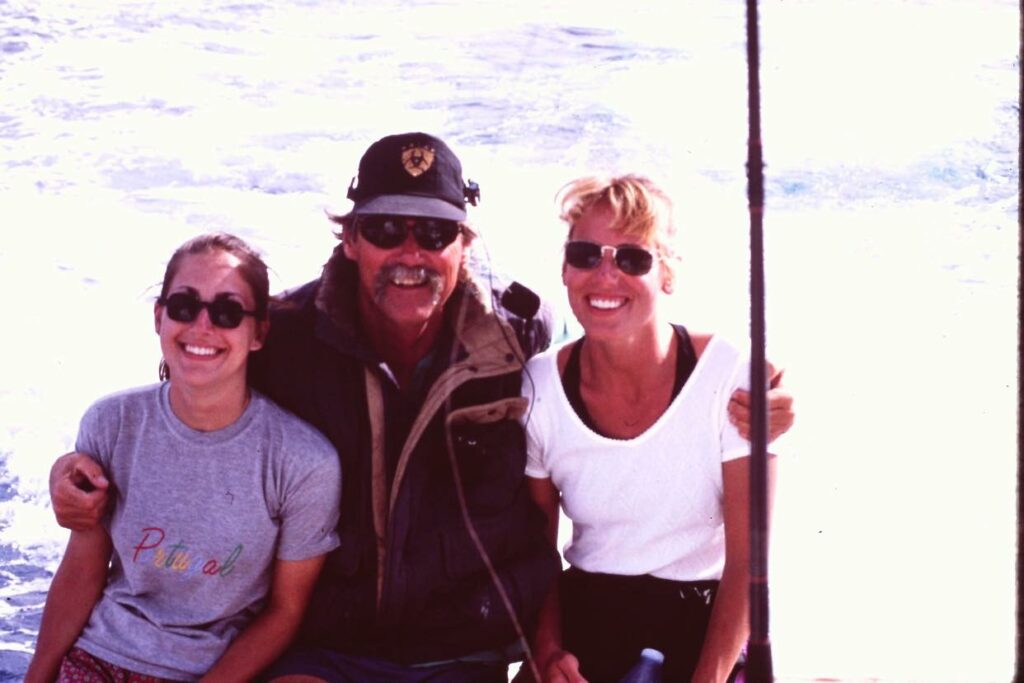
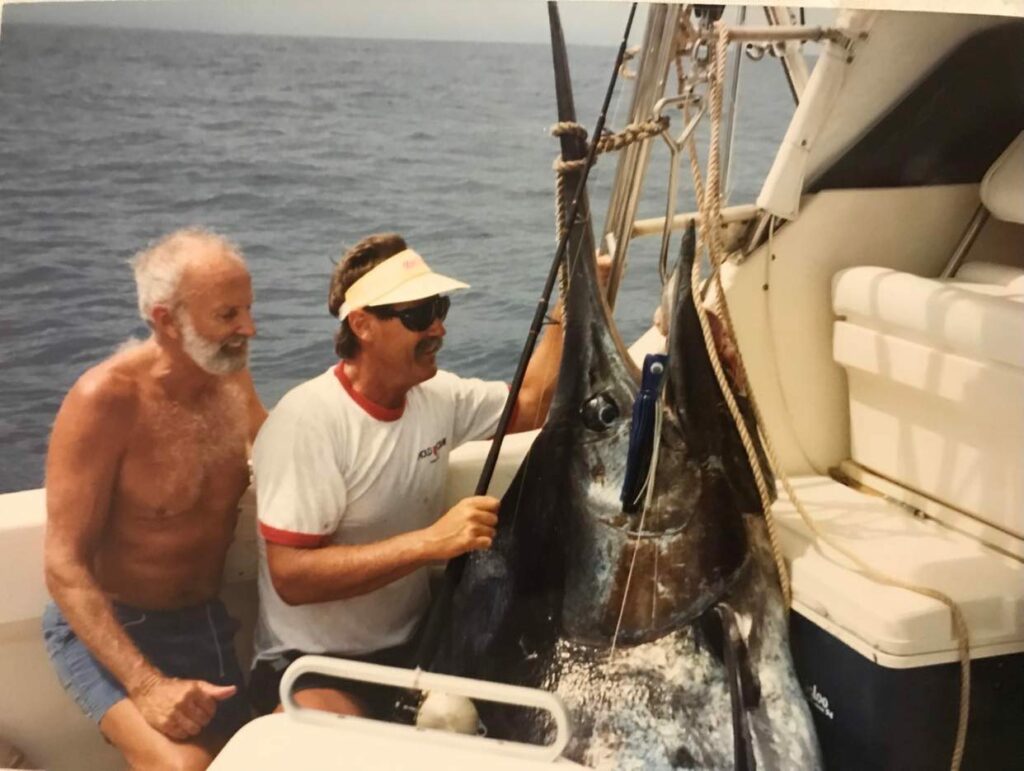
The timing proved perfect for a fishing partnership for both men. Stewart was in the process of retiring, and Captain Barkley Garnsey was working in yacht brokerage for Merritt’s, taking boats to Indonesia. Fishing a season on Australia’s Great Barrier Reef was a condition of Bark’s contract for delivering one of the boats. He invited Stewart over to fish with him. The petroleum engineer had been honing his offshore fishing skills in the Gulf of Mexico but wanted to travel and explore the world’s fishing grounds. So, in 1983 Stewart bought a 37-foot Merritt, named it Chunda, and hired Garnsey as captain.
“I had no interest in light tackle fishing back then. That first year we went down to Mexico, to Cozumel, and were sailfishing. Stewart was fishing 20-pound and he asked if we had anything lighter. So we started rooting around, and I think we probably borrowed some tackle from the other dock guys. We ended up at 4-pound and caught a couple. The next year, we went to Venezuela so Stewart could work on his pitch baiting techniques since he was used to lure fishing in the Gulf. One day, he mentioned light tackle fishing again and said we should look up the records in the IGFA book. It was the time when the IGFA had just created several new light-tackle billfish record categories for two- to 16-pound line classes. Stewart has just set his first record, a white marlin on four-pound. At that point, we were sailfishing primarily on 20-pound. You can only catch so many. Numbers don’t mean much to me, so Campbell and I agreed that if we’re going to go after records, let’s catch big ones,” Bark says.
The next year, with intel and recommendations from then IGFA president, E.K. Harry, Stewart chartered a small single screw 25-foot inboard-outboard in Abidjan and fished off Africa’s Ivory Coast. Bark and Nickie Campbell were with him on this exploratory trip. While the waters here didn’t boast big numbers, they did produce big fish. The next year, they chartered a Bertram 31 from friends they met at the Abidjan Marlin Club. Later, they had the 30-foot mares built in Brazil and shipped her over to the Ivory Coast. From there, Stewart, Bark, and mates Charles and Spencer, along with fellow sportfishermen Jeff Thomas, Ron Hinman, OB O’Bryan, Hamish Burns and Peter Wright, worked their way north to the Canary Islands and Madeira. Over the years, they also fished these destinations on a 49- foot Merritt and 42-foot Gamefisherman, both also named Chunda.
“We got several records over in Africa and later the Canaries and Madeira. I’ll never remember them all. But I’ll tell you that there were a good group of guys all trying to beatthe records. Skip Smith. Laurie Wright. Bobby Brown. Nobody ever questioned guys like this. If they said they caught a record, they did. If you caught one and beat somebody’s record, the first thing you would hear, and I don’t care where you were in the world, you’d get a congratulations. These were the kind of guys we competed against,” says Bark.
The fishing chapter in Bark’s life with Stewart ended when the angler passed away in 2010. Today, three men’s blue marlin world records still stand. These are the eight-pound with a 562-pounder set in 2002 in the Canaries, the 16-pound with an 820-pound fish off the Ivory Coast in 1992 and the 30-pound with an 872-pound catch off Madeira in 1995. Still on the record books too is Nickie Campbell’s 708 pound Women’s record on 30-pound line.
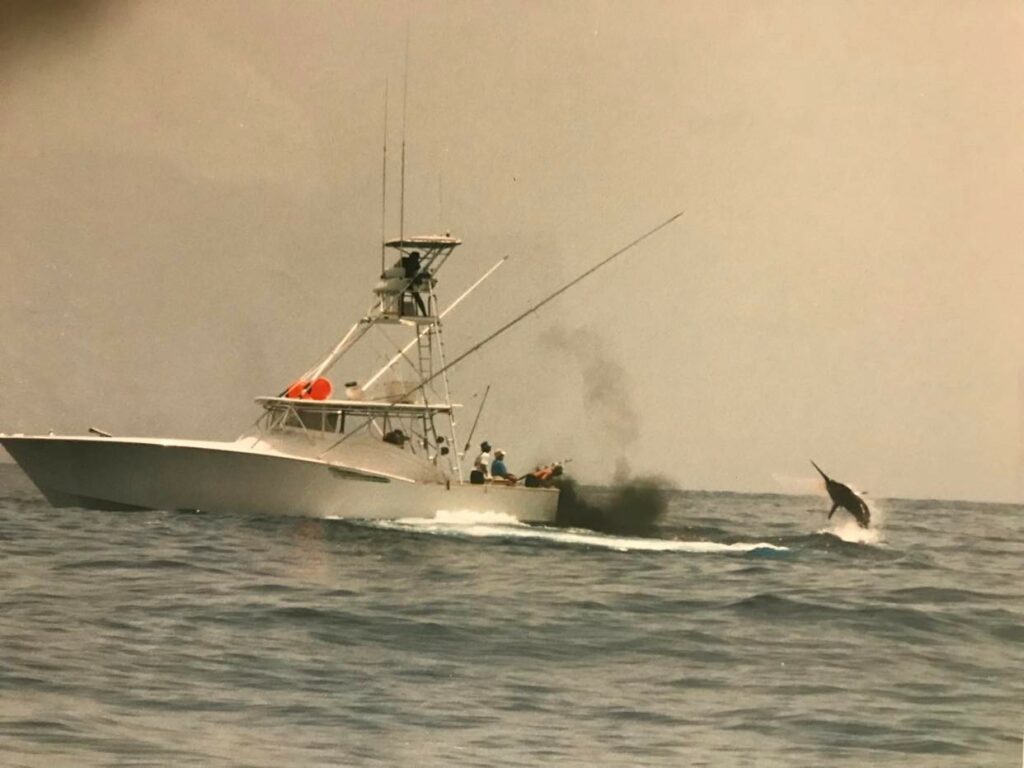
No “I” In “We”
In 2010, Bark earned both the Bob Herder Light Tackle Award and Gilbert Keech Heavy Tackle awards, both presented by the IGFA. Two years later, he entered the Hall of Fame by earning the IGFA’s prestigious Tommy Gifford Award.
Today, he’s spending more time catching up with family than fish, spending time this summer in generations-owned cabins on the St. Lawrence River.
The Essence of Teamwork in Sportfishing
Lastly, he says, “I’m going to tell you the secret to my success as a fisherman. It’s really simple. Hire the best mates you can get. The guys that you can count on. And listen to their ideas. You make it a team, and that’s how it works. As I told Mr. Campbell for years, I haven’t personally caught anything, but we have caught a lot as a team. I’m a firm believer in that.”
Dive into the Rich Heritage of Sportfishing with our InTheBite Old Salts’ Series
Each story a tribute to the wisdom, adventure, and lifetime achievements of the sportfishing captains. Explore the archives and anchor yourself in the legacy of these revered captains. Click Here
Don’t Forget to Check Out Our Sportfishing Job Board! Did You Know? It’s the perfect platform for seeking skilled captains and mates. Whether you’re on the hunt for your dream team or looking to join one, your next big adventure begins here. Explore the opportunities now! Click Here
Dive Deeper into the World of Sportfishing
Unlock Exclusive Savings: Enjoy 50% Off Your Subscription!
Are you ready to explore the thrilling world of sportfishing from the comfort of your home? Subscribe now and embark on a journey filled with captivating stories, expert insights, and insider tips. Choose between our digital or print edition and secure an incredible 50% discount on your subscription.
Subscribe today and get ready for an adventure like no other. Click here to subscribe and elevate your sportfishing experience with InTheBite Sportfishing Magazine.













